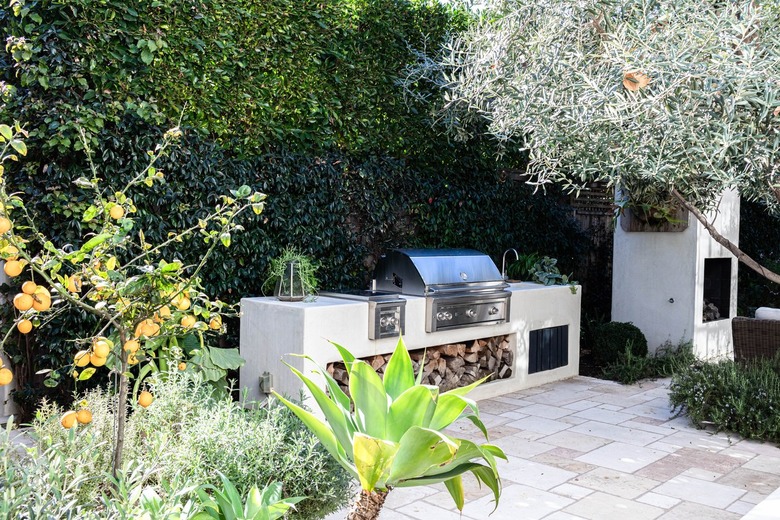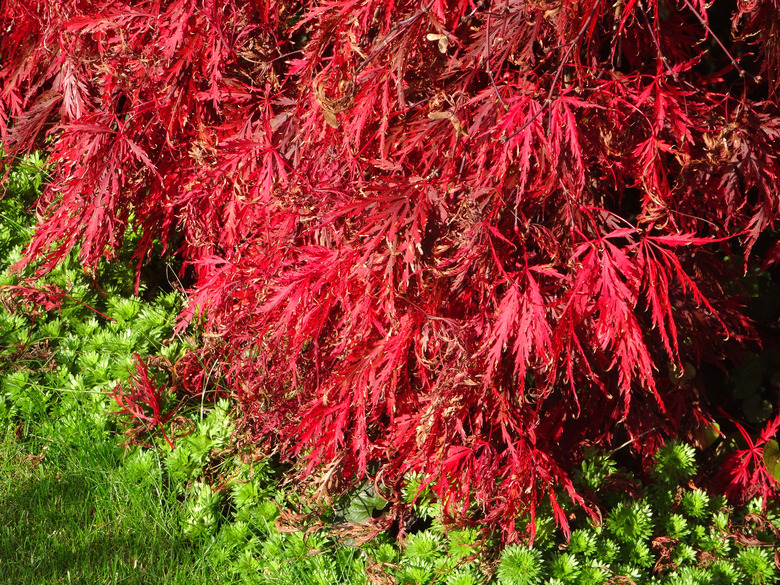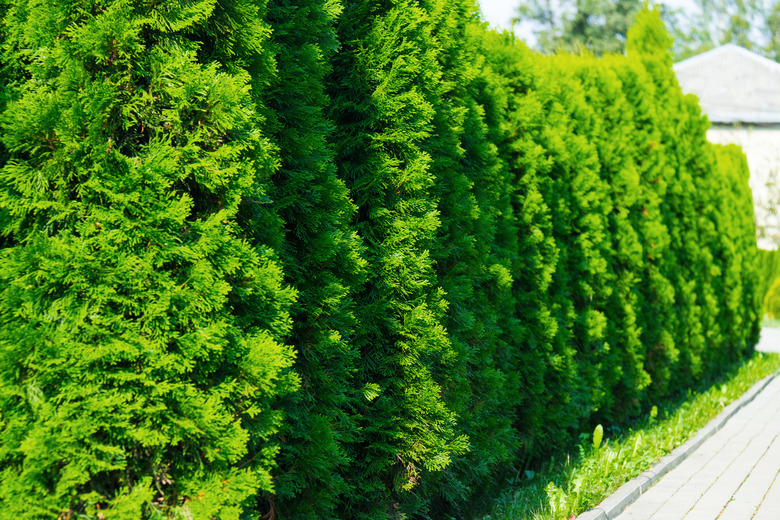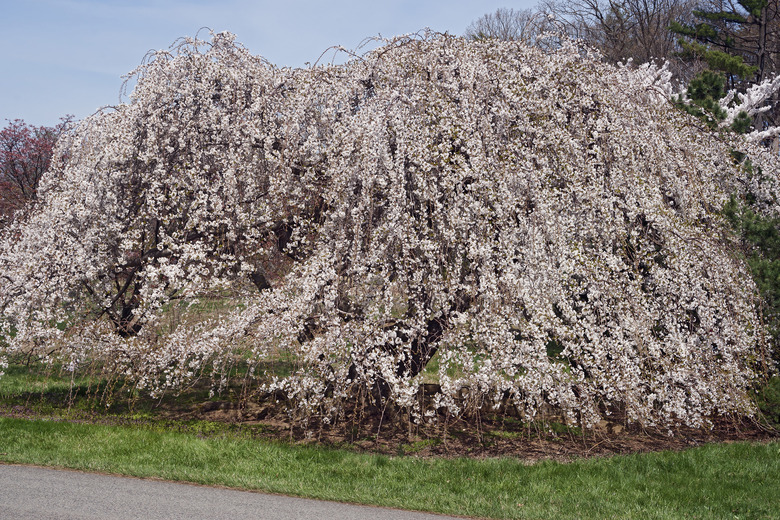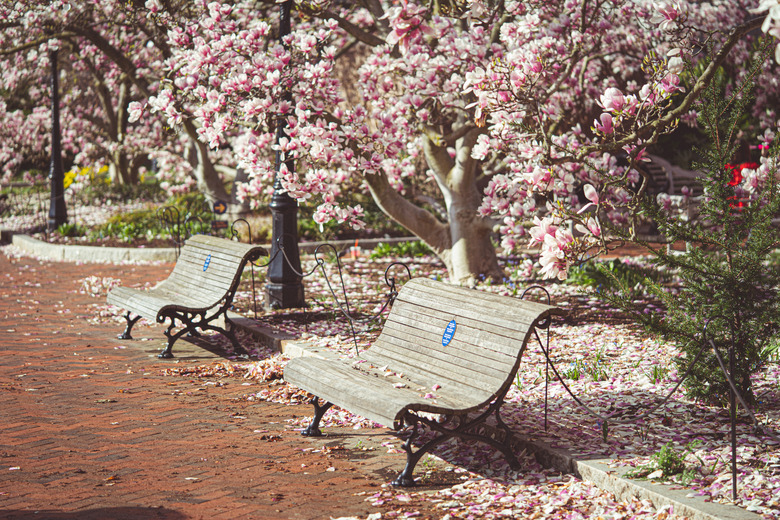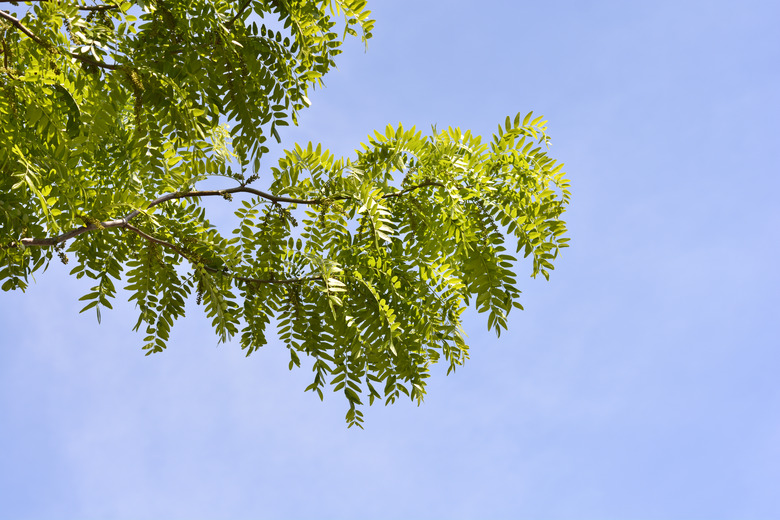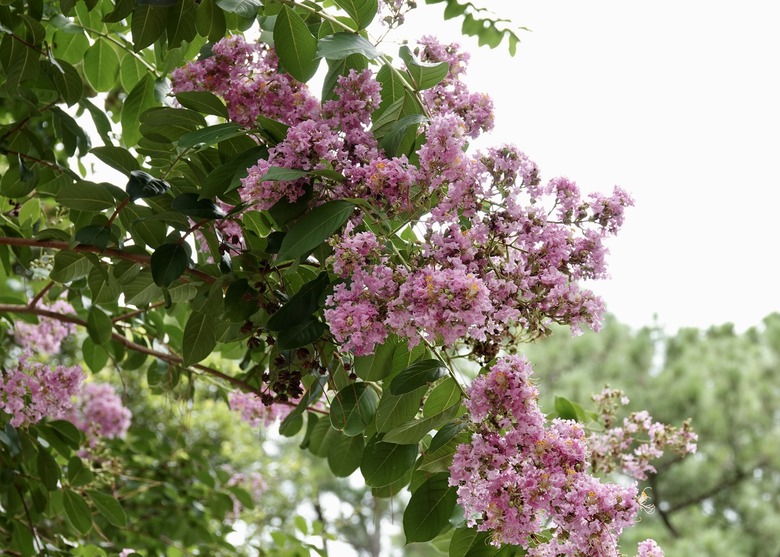The 10 All-Around Best Landscape Trees
We may receive a commission on purchases made from links.
The best trees to add to your yard are the ones that have the traits you seek for specific spots on the property. For instance, an ornamental flowering tree adds a little more beauty to the front yard, while shade trees help keep the patio and backyard cooler on sunny summer days. They'll also need to be hardy in your hardiness zone and adapted to growing on your soil type. While the best trees for any location vary a bit depending on climate plus the locations and conditions within the yard, these trees are all-around favorites for providing shade, privacy or a bit of curb appeal.
Best Trees for Your Yard
Best Trees for Your Yard
Before venturing out to get a tree based on its looks alone, take a good look at your yard for potential tree locations. This helps assess how much space you have, especially if you are considering tall trees that grow quickly or provide a huge canopy for shade.
Aside from your yard layout, determine what you're really looking for in a tree. Do you need shade trees to help keep the house or yard cooler on a hot summer day? Perhaps you'd like more privacy for a lengthy driveway situated near a neighbor's yard. If you enjoy trees that flower in spring, think about whether you want one just for the flowers or one that also bears fruit you can eat, such as cherries. If you live in an area that receives a lot of snow and ice for months, an evergreen tree might provide some much-needed color to an otherwise gray and barren landscape in your yard.
Once you have an idea of the basic genres of trees you want for the yard, such as those that offer shade, flowers or curb appeal, you're ready to look up tree species in the particular categories that best suit your yard. These trees provide at least one desirable trait for the average yard and are available in several United States Department of Agriculture (USDA) hardiness zones.
1. Dwarf Japanese Maple
Japanese maple (Acer palmatum, USDA zones 5-8) comes in numerous cultivars that add immense curb appeal to a front yard. Standard Japanese maples get 15 to 20 feet high, while dwarf cultivars max out at 10 feet high, making them ideal for ornamental use even in a small yard.
Crimson Queen has crimson-red leaves that turn scarlet in autumn. This Japanese maple has a weeping branch structure with delicate leaves, so it's sure to make a statement. The Autumn Moon Japanese maple is similar in size, but unlike many of its cousins, this one's leaves are yellow and orange, becoming more colorful in fall. Both cultivars enjoy partial shade, especially in the afternoon, and Autumn Moon does well even in areas with only partial sun. Either can be planted close to the house, so they're perfect for creating a focal point in the front yard.
Japanese maples prefer slightly acidic, moist soil that drains well, as they may be prone to root rot without sufficient drainage. Mulch helps keep the tree's shallow roots moist, reducing the need for frequent watering once the roots are established. Aphids and weevils are a couple of pests that enjoy this tree. Prune only every few years as needed since the tree "bleeds" sap if it is pruned virtually any time except July or August.
2. Norway Spruce for Privacy
At the other end of the spectrum from Japanese maple is the cold-hardy Norway spruce (Picea abies), the fastest growing of the spruce trees, a perennial in zones 2-7. This tree is perhaps best known for its ability to block wind, as it's strong enough to withstand very windy conditions. Since it grows 40 to 60 feet tall and up to 30 feet wide, it's best for large properties as either a wind blocker or to add privacy.
This evergreen tree grows 1 to 2 feet per year, does well in just about any soil (whether acidic or alkaline) and is somewhat drought tolerant. It prefers full sun. Small pink flowers in spring morph into cones that grow up to 6 inches long as they mature.
3. Green Giant Arborvitae
The green giant arborvitae (Thuja 'Green Giant') is another tree prized for privacy and to block wind. This tree grows in zones 5-8 at a whopping 2 to 3 feet per year, topping out at 60 feet high and 15 to 20 feet wide. This tree works well in full sun to partial shade, and while it tolerates many types of soil, it doesn't like swampy, poorly draining soil or salty conditions.
A series of green giant arborvitae spaced 10 feet apart creates a stunning privacy hedge for a lengthy driveway or the perimeter of a large property. While it does well in hot, humid conditions, this arborvitae also tolerates ice and snow, so it's great for blocking wintry winds and snow drifts if used as hedges between the prevailing wind and a driveway. This plant is also easy to propagate from cuttings and requires little pruning unless you want to shape a series of them into a squared hedge, for instance. Left alone, the green giant grows into a tall, narrow cone shape.
4. Yoshino Weeping Cherry
The gorgeous weeping Higan cherry tree (Prunus x subhirtella 'Pendula') is a show stopper as the focal point for virtually any yard in zones 5-8. Its branches full of spring white or pink blooms cascade down toward the ground in a display of head-turning beauty. Once mature, the Higan weeping cherry reaches 15 to 30 feet high with branches that span nearly as wide. For this reason, don't plant it too close to a walkway—give it some space to fully arc out into a cascade of blooms rather than planting it in a cluster of trees.
This weeping cherry grows best on well-draining and slightly acidic soil in full sun. Although it is a cherry tree, its small fruits are not tasty. In fall, the weeping cherry's green leaves turn golden, orange and bronze. Leaf diseases that cause spots or even holes on the foliage are common on cherry trees. Removing affected leaves to encourage air flow helps prevent the problem from spreading during wet weather. Chemical treatment isn't usually necessary, as the tree recovers on its own.
5. Chinese or Kousa Dogwood
The Chinese dogwood (Cornus kousa), also known as the kousa dogwood or strawberry tree, is another tree prized for its beautiful flowers. This dogwood grows in zones 5-8, reaching heights and widths up to 20 to 30 feet, while some cultivars such as 'Wolf Eyes' are more compact at only 6 feet wide. The Chinese dogwood flowers in May and June after its leaves start to grow, offering a display of white or pink blooms.
It produces small fruits in late summer and early autumn. Although these are edible, it's best not to eat them unless you are sure you have a Chinese dogwood, as the fruits of some other dogwoods are mildly toxic. This tree is often planted along the corners of structures to soften the view.
This tree prefers slightly acidic, well-draining soil in full sun or partial shade. A ring of mulch around the base of the tree, extending to the drip line and pulled back at least 6 inches from the trunk, helps provide a consistent moisture level that this tree enjoys, and it also helps protect the tree from mower and trimmer damage. This tree can also be trimmed for shape and size during winter although pruning isn't generally necessary except to remove dead branches.
6. Saucer Magnolia
A saucer magnolia tree (Magnolia x soulangeana) adds splendor to any yard thanks to the huge, abundant flowers that bloom each spring. This tree grows in zones 4-9 at a rate of about 1 to 2 feet per year, reaching up to 30 feet high with a canopy spanning nearly as wide. Its cup-shaped flowers range from light to dark pink and grow 5 to 10 inches in diameter, adding beauty to the entire street when placed in a front yard. The tree takes on a nice rounded shape as it matures.
The bark of a saucer magnolia is easily damaged, so use care when trimming weeds or mowing around the tree. The saucer magnolia is an early bloomer, showing its magnificent blooms in late winter to early spring. Frost may damage early blooms. Some cultivars produce random flowers into summer and fall.
Magnolias prefer plenty of light with shade from hot afternoon sun in warm climates. Moist, well-draining soil is ideal, but a magnolia tolerates some drought-like conditions once the tree is well-established, according to Magnolia Society International.
7. Eastern Redbud
The native Eastern redbud tree (Cercis canadensis) is prized for its early blooming, tiny flowers that range from white to purple to pink in March and April. This rounded tree, a perennial in zones 4-9, stays relatively small (about 25 feet high at maturity), growing less than 2 feet per year. It's a great choice if you prefer low-maintenance trees in your yard. It's also easy to grow and tolerates acidic or alkaline soil, although it prefers a well-draining area.
The redbud is best in areas with full sun to partial shade and looks stunning as a focal point for a garden area or in a grouping. Since bees pollinate the spring blooms, redbud may not be a great choice for an area near your home's walkways or entry points if anyone in the house is afraid of bees (or allergic to their stings).
Some redbud cultivars' foliage starts out red, turns green as the leaves grow and then eventually changes to yellow in autumn. Other redbud cultivars have purplish, yellow, or variegated leaves. By midsummer, bean-style seed pods hang from the tree and last into winter.
8. Thornless Honey Locust
The thornless honey locust (Gleditsia triacanthos var. inermis) is an easy-to-grow tree with a canopy that offers plenty of shade. Since this tree—which grows in zones 4-9—prefers sun, it's a great choice for an area of the yard that could use more shade. This tree grows more than 2 feet per year. At maturity, the thornless honey locust reaches up to 70 feet tall with a canopy spread that is almost as wide. In autumn, its tiny, golden-yellow leaves create a stunning view against a blue sky.
This tree thrives in almost any type of soil; it can also handle a little flooding or drought, so it's a good tree for many areas, such as along walkways. It's a common sight near parking areas or along city streets on tree lawns, as the honey locust even tolerates a bit of road salt in winter. It's also used at times on slopes to help prevent further erosion.
Many thornless honey locust cultivars have an abundance of long seed pods that drop off in fall, so this could create extra material to clean up before mowing the surrounding lawn. Only plant thornless cultivars of this tree, as the numerous thorns on other honey locusts are strong enough to puncture car tires, according to the United States Department of Agriculture.
9. Sugar Maple
The sugar maple (Acer saccharum) is both a shade tree and, in fall, a beautiful tree, so you'll get twice the bang for the buck. A sugar maple, which grows in zones 3-8, offers some of the most colorful fall foliage every year, with leaf colors ranging from yellow to bright orange and deep red, sometimes all on the same leaf. This tree has the potential to grow up to 120 feet once mature with a canopy up to 60 feet wide. The shade-tolerant sugar maple grows on many soil types, preferring a well-draining soil in an area with plenty of room to grow. It's not a good tree for a tree lawn in a wintry climate where road salt may seep through to the tree's roots.
This tree is also prized commercially for its hard wood and sap that yields maple syrup. In a residential environment, birds and squirrels spend plenty of time in sugar maples building nests and seeking food in and around the tree.
The sugar maple drops loads of leaves in the fall. Many types of leaf disease plague sugar maples, causing discolored spots on the leaves. Except in extreme cases, these diseases usually don't cause major harm to the tree.
10. Crape Myrtle
The crape myrtle tree (Lagerstroemia indica and hybrids) is a flowering southern favorite, but it also grows well in other areas of the United States that don't have long periods of extremely cold weather—best in zones 6-10. Crape myrtles grow quickly at more than 2 feet per year. Depending on cultivar, trees may grow to 20 feet tall and up to 15 feet wide while dwarf shrub-form cultivars may be as short as 1 to 2 feet. The dwarf types can be planted several feet apart to create a low-growing hedge. Crape myrtles have crinkly flowers in shades of white, pink, lavender, or red blooms. In autumn, the green leaves turn yellow, red and orange.
Crape myrtle prospers in sunny, hot and humid climates. It prefers moist, well-draining soil and is somewhat drought tolerant. In climates with freezing winter weather, the crape myrtle may die back to the ground, so keep this in mind when shopping for a specific cultivar.
This tree commonly develops suckers or offshoots that may require pruning. This plant can also be pruned to specific shapes to develop a nice-looking tree for the front yard. These trees are susceptible to root rot in overly wet conditions as well as leaf spot and powdery mildew.
